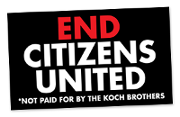Biblio
(2000). The bully at work: what you can do to stop the hurt and reclaim your dignity on the job.
"Groupthink is George Orwell's term from 19841, the dark futuristic novel. Psychologists borrowed the term to describe a group incapable of critically assessing the pros and cons of a decision. Because the group members feel so tightly connected, so cohesive, they prefer to see only one side of an issue. They are easily led by a forceful leader and busy themselves by falling in line behind the boss and kissing up to stay in good favor. They become a mindless, overprotective clique when assembled as a group, putting the political goal of squashing dissent above all other matters."2
- 1. (1949). 1984.
- 2. According to the Wikipedia entry on groupthink, it wasn't Orwell, but rather William H. Whyte, Jr., who coined the term, as he writes in 1952:
"Groupthink being a coinage — and, admittedly, a loaded one — a working definition is in order. We are not talking about mere instinctive conformity — it is, after all, a perennial failing of mankind. What we are talking about is a rationalized conformity — an open, articulate philosophy which holds that group values are not only expedient but right and good as well."
Wikipedia: groupthink
(1996). Bully in Sight: How to Predict, Resist, Challenge and Combat Workplace Bullying.
"Stress can be defined, albeit rather vaguely, as any form of physical, emotional, or psychological pressure, and its endemic presence in the modern workplace probably owes much to insecurity and coercion.
An alternative view of stress is a consequence of the degree to which people feel they lack control of themselves, their situation, and their life. If a person feels they cannot influence or control events in their life, they will feel anxious, and hence feel insecure and afraid." (p. 174)
An alternative view of stress is a consequence of the degree to which people feel they lack control of themselves, their situation, and their life. If a person feels they cannot influence or control events in their life, they will feel anxious, and hence feel insecure and afraid." (p. 174)
(1969). Business as a Game.
"Men down the line often tend to judge the boss with unrealistic severity—to expect perfection from him, complete rationality, absolute efficiency. Yet a little observation tells us that business is not carried out in a rational way....Wastefulness, shortsighted policies, impulsive moves, excessive use of trial and error methods, strange personal quirks in high places—all this is normal in business." (p. 71)
(2001). Business Is Combat: A Fighter Pilot's Guide to Winning in Modern Business Warfare.
"This book began with people and it ends with people, because ultimately they are an organization's greatest asset. It is individuals who innovate, not companies. It is individuals who persist against all odds, not corporate guidelines or a time clock."
(1997). Business Law.
(2003). Business Leaders and Success: 55 Top Business Leaders and How They Achieved Greatness.
"Deming's sometimes-gruff nature reflected impatience with managerial abuses of power. He thought that power carried a precious responsibility. 'Research shows', Deming said, 'that the climate of an organization influences an individual's contribution far more than the individual himself.' " (p. 206)
(1994). C++ Components and Algorithms.
(1997). The C++ programming language.
(1995). C++ Templates and Tools.
(1993). C.G. Jung and the Problem of Evil: The Strange Trial of Mr. Hyde.
"To the extent that we are egocentric we live in fear, under a sense of constant threat. We also live out and fulfill only a small portion of our personalities, because the egocentric life is a cramped life. It is like living inside a walled, heavily defended castle. Here we try to feel secure, but it does not occur to us that our castle is also our prison." (p. 133)
(2010). Can Being Creative Improve Your Health?.
"Highly creative individuals have long noted the salutary effects of creative activity on both physical and mental health. Many types of creative work can relieve stress and enhance positive mood, two major factors in promoting good health."
(2003). Career Warfare: 10 Rules for Building a Successful Personal Brand and Fighting to Keep It.
"Organizations that value you only for your business skills—a lot of Wall Street firms fall into this category—are very antiseptic. They tend to be built on addictions, but not loyalties: addictions to the money, addictions to the process. They are a bit like galley ships. The overseers don't care about the relationship. They just want you to keep rowing.
This is fine when times are good, but if you should ever fail to handle your oar well, you are overboard. Such firms will have no compunction about firing you and even ruining your reputation, if it serves their purpose." (p. 54)
(1989). Catch-22.
(1996). Changing the Bully Who Rules the World: Reading and Thinking about Ethics.
"We serious readers like to meditate upon villainy when we find it in life or in books. Such meditating makes us feel philosophical. Helping professionals are less peaceable. They think of human cruelty as something to study with the unswerving goal of getting rid of it. They interest themselves with, among other subjects, a spectacular specialty of villainy that would have made the poet Tom McGrath prick up his ears—that is, the villainous cunning by which a few human beings condition whole enclaves of other human beings dutifully to commit large-scale cruelty. They regard cruelty the way physicians regard a bacterium or a virus: first, they identify it as fast as they can—get its measure, so to speak, figure out its lifestyle and habitat of choice—and then second, they devise for it the most hostile environment that their technical prowess can invent. We would be furious if our doctor looked into our sore throat, drew back, and then cried out, 'How utterly fascinating! How extraordinary, really, the way those germs writhe and thrive in the host's dark vault of throat!' We want the doctor to be a confrontational agent of change, not an aesthete. If our doctor won't get rid of those squatters we'll find another doctor who will." (p. xxii)
(1988). Changing Ways: A Practical Tool for Implementing Change Within Organizations.
"A basic axiom of any change effort is that 'the further away the people defining the change are from the people who have to live with the change, then the more likelihood that the change will develop problems.'" (p. 59)
(1997). The circle of innovation : you can't shrink your way to greatness.
"...wealth is not gained by perfecting the known, but by imperfectly seizing the unknown." (p. 30)
(1987). Classics of Public Administration.
"The philosophy of management by directive and control—regardless of whether it is hard or soft—is inadequate to motivate because the human needs on which this approach relies are today unimportant motivators of behavior. Direction and control are essentially useless in motivating people whose important needs are social and egoistic. Both the hard and the soft approach fail today because they are simply irrelevant to the situation." (p. 260)
(2000). Claw Your Way to the Top: How to Become the Head of a Major Corporation in Roughly a Week.
"So the trick, with subordinates, is to keep them happy, productive, hopeful, and—above all—subordinate." (p. 36)
(C)2014 CC-BY-NC 3.0, workcreatively.org











 ]
]